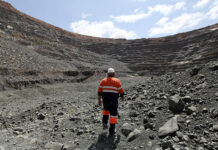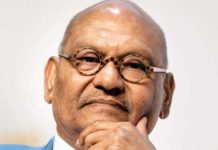
De Beers is going back into Angola to prospect for diamonds in what amounts to a validation of the changes made within the country regarding the running of its mining industry since the new government led by President Joao Lourenco took over.
De Beers’ move – announced on December 7 – follows that of Rio Tinto which on October 11 confirmed it had formed a joint venture with Angolan state-owned diamond company Endiama to explore the Chiri kimberlite deposit in Angola’s Lunda Sul region.
According to Rapaport News, Rio Tinto has secured a 75% stake in the first phase of the mine with Endiama retaining a 25% interest but the contract “leaves open the possibility for Endiama to increase its holding to 49%.”
These developments are hugely significant because Angola is arguably the most prospective region in the world to find a major diamond deposit which miners have been searching for without success since 1991. That was when the last big strike was made at Ekati in Canada.
Despite this, most diamond groups have shunned Angola since the early 2000’s because of the difficulties operating there under the commercial regimes imposed by the government of former president Jose Eduardo dos Santos.
Dos Santos stepped down in 2017 to be replaced by Lourenco who has set about reforming the Angolan economy and dealing with the corruption and nepotism of the previous administration.
Irony for South Africa is that one of the key people implementing those changes is Jacinto Rocha – an Angolan citizen who was formerly a deputy director general in the Department of Mineral Resources.
Rocha was heavily involved in the formulation and implementation of South Africa’s Minerals and Petroleum Resources Development Act introduced in 2005. He was widely viewed by South African mining executives at the time as an “Angolan Marxist” because of his uncompromising, socialist approach.
Rocha subsequently left the DMR becoming a private mining industry consultant in South Africa but he returned to Angola last year to be appointed president and CEO of Angola’s new National Agency for Mineral Resources which was created to regulate Angola’s mining industry and attract new foreign investment into the sector
De Beers CEO Bruce Cleaver commented, ”Angola has made significant progress towards creating a stable and more predictable investment environment in which the people of Angola can directly benefit from increased foreign direct investment.”
De Beers pulled out of Angola in 2012 because, according to a spokesman, “the exploration activity had been unsuccessful in identifying deposits that were deemed economically viable.”
Other diamond companies were blunter in their reasons for getting out citing the commercial operating terms which were biased hugely towards the government and certain favoured individuals.
Specifically, no foreign investor was allowed to have majority ownership of any diamond project in Angola. Control was split between the government and a nominated Angolan partner.
Despite holding a minority stake the foreign investor was expected to fund all the capital expenditure required upfront. The investor had first call on recovering that capex from profits subsequently made by mining operation but often still had to make some payments to the Angolan partner and government while recovering the capex.
The terms of the Rio Tinto agreement indicate that situation has changed fundamentally but De Beers will not provide any details on its deal.
The De Beers spokesman declined to comment on the commercial terms saying only that, “a mineral investment contract will be subject to the negotiations that are now being initiated.”










